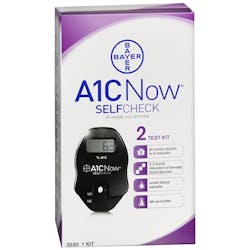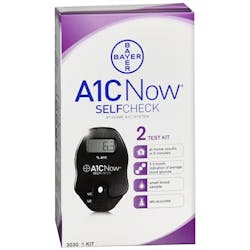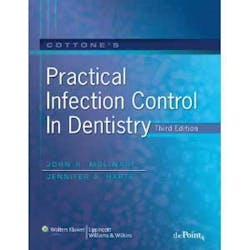Foundation of caries management remains unchanged
By Maria Perno Goldie, RDH, MS
Timothy Wright, DDS, MS, discussed CAMBRA in his session Emerging Science that Influences Practice. He highlighted that toothpastes, other topically applied fluorides, fluoridated water, and pit and-fissure sealants, along with dietary improvement, are still the foundation of caries management.(1,2) The use of these interventions is supported by good-quality evidence, and are used widely prevention and control of dental caries and decay. Other remineralizing agents may be used as adjunctive means for preventing, arresting or reversing the dental caries process, and subsequent tooth decay.
Timothy Wright, DDS, MS, discussed CAMBRA in his session Emerging Science that Influences Practice. He highlighted that toothpastes, other topically applied fluorides, fluoridated water, and pit and-fissure sealants, along with dietary improvement, are still the foundation of caries management.(1,2) The use of these interventions is supported by good-quality evidence, and are used widely prevention and control of dental caries and decay. Other remineralizing agents may be used as adjunctive means for preventing, arresting or reversing the dental caries process, and subsequent tooth decay.
A recent American Dental Association Panel (ADA) panel concluded that some non-fluoride agents may offer various benefits as adjunctive therapies in children and adults at higher risk of developing tooth decay. These recommendations are presented as a resource for dentists and others to help direct the clinical decision-making process. As part of the evidence based approach to care, these clinical recommendations should be incorporated with the clinician’s professional judgment and the patient’s needs and preferences.(3)The panel was convened by the ADA Council on Scientific Affairs, in association with ADA Division of Science staff. They conducted a MEDLINE search to find all randomized and nonrandomized clinical studies regarding the use of nonfluoride caries-preventive agents. The panel evaluated evidence from 50 randomized controlled trials and 15 nonrandomized studies to assess the efficacy of various nonfluoride caries-preventive agents. They defined “levels of certainty” as high, moderate and low.(4) The paper discusses: sucrose-free polyol chewing gums; xylitol candy, lozenges and syrup; and topical chlorhexidine products.
Dr. Wright highlighted the new guidelines for fluoride in drinking water. On January 7, 2011, the Environmental Protection Agency (EPA) and The U.S. Department of Health and Human Services (HHS) announced “new” scientific assessments and actions on fluoride, and that agencies were working together to maintain benefits of preventing tooth decay while preventing excessive fluoride exposure. They announced methods to ensure that standards and guidelines on fluoride in drinking water continue to provide the maximum protection to the American people to support good dental health, especially in children. The HHS proposed that the recommended level of fluoride in drinking water be set at the lowest end of the current optimal range to prevent tooth decay, and the EPA initiated a review of the maximum amount of fluoride allowed in drinking water.
These actions maximize the health benefits of water fluoridation, an important tool in the prevention of tooth decay, while reducing the possibility of children receiving too much fluoride and developing fluorosis. The Centers for Disease Control and Prevention (CDC) named fluoridation of drinking water as one of the ten great public health achievements of the 20th century, as it benefits all residents of a community. The HHS and EPA reached an understanding of the latest science on fluoride and its effect on tooth decay prevention, and the development of dental fluorosis that may occur with excess fluoride consumption during the tooth forming years, age eight and younger. Dental fluorosis in the United States appears mostly in the very mild or mild form, as barely visible lacy white markings or spots on the enamel. The severe form of dental fluorosis, with staining and pitting of the tooth surface, is rare in the United States. There are several reasons for the changes seen over time, including that Americans have access to more sources of fluoride than they did when water fluoridation was first introduced in the United States in the 1940s. Water is now one of several sources of fluoride. Other common sources include dental products such as toothpaste and mouth rinses, prescription fluoride supplements, and fluoride applied by dental professionals. Water fluoridation and fluoride toothpaste are largely responsible for the significant decline in tooth decay in the U.S. over the past several decades.
The HHS’ proposed recommendation of 0.7 milligrams of fluoride per liter of water replaces the current recommended range of 0.7 to 1.2 milligrams. This updated recommendation is based on recent EPA and HHS scientific assessments to balance the benefits of preventing tooth decay while limiting any unwanted health effects. These scientific assessments will also guide the EPA in making a determination of whether to lower the maximum amount of fluoride allowed in drinking water, which is set to prevent adverse health effects. The new EPA assessments of fluoride were undertaken in response to findings of the National Academies of Science (NAS). At the EPA’s request, the NAS reviewed new data on fluoride in 2006 and issued a report recommending that EPA update its health and exposure assessments to take into account bone and dental effects and to consider all sources of fluoride. In addition to the EPA’s new assessments and the NAS report, the HHS also considered current levels of tooth decay and dental fluorosis and fluid consumption across the United States.(5) More information about the national drinking water regulations for fluoride is also available.(6)References
1. Walsh T, Worthington HV, Glenny AM, Appelbe P, Marinho VC,Shi X. Fluoride toothpastes of different concentrations for preventing dental caries in children and adolescents. Cochrane Database Syst Rev 2010;(1):CD007868).2. Griffin SO, Oong E, Kohn W, et al. The effectiveness of sealants in managing caries lesions. J Dent Res 2008;87(2):169-174.3. Rethman MP, Beltrán-Aguilar ED, Billings RJ, Burne RA, Clark M, Donly KJ, Hujoel P, Katz BP, Milgrom P, Sohn W, Stamm JW, Watson G, Wolff M, Wright JT, Zero D, Aravamudhan K, Frantsve-Hawley J, and Meyer DM. Nonfluoride caries-preventive agents: Executive summary of evidence-based clinical recommendations. JADA 2011;142;1065-1071. The full report can be accessed at ebd.ada.org/ClinicalRecommendations.aspx).4. ebd.ada.org/contentdocs/FINAL_2011_Revised__ADA_. 5. Fluoride: Dose-Response Analysis For Non-cancer Effects and Fluoride: Exposure and Relative Source Contribution Analysis. water.epa.gov/action/advisories/drinking/fluoride_index.cfm.6. Fluoride Risk Assessment and Relative Source Contribution:water.epa.gov/drink/contaminants/basicinformation/fluoride.cfm. Additional resources
1. Fact sheet (PDF) (2 pp, 29K) EPA has completed and peer-reviewed a quantitative dose-response assessment based on the available data for severe dental fluorosis as recommended by National Research Council (NRC). Additional research will be necessary to obtain dose-response data amenable to a quantitative risk assessment for Stage II skeletal fluorosis and/or skeletal fractures. The dose-response assessment provides a reference dose based on the critical health effect of pitting of the enamel in severe dental fluorosis.2. Fluoride: Dose-Response Analysis For Non-cancer Effects (PDF) (160 pp, 1.5MB; 820-R-10-019). 3. Fluoride-Related Skeletal Effects: Evaluations of Key Studies (PDF) (72 pp, 2MB; 820-R-10-017).4. Dental Fluorosis: Evaluations of Key Studies (PDF) (283 pp, 8.3MB; 820-R-10-018).5. Comment-response Summary Report for the Peer Review of the Fluoride: Dose-Response Analysis for Non-Cancer Effects Document (PDF) (107 pp, 713K; 820-R-10-016).6. EPA has also completed and peer-reviewed a document on environmental exposure of children and adults to fluoride and the relative source contribution (RSC) for water. The RSC is needed in order to derive the Maximum Contaminate Level Goal (MCLG) from the dose-response assessment. 7. Fluoride: Exposure and Relative Source Contribution Analysis (PDF) (210 pp, 15MB; 820-R-10-015).8. Comment-Response Summary Report for the Peer Review of the Fluoride: Exposure and relative Source Contribution Analysis Document (PDF) (113 pp, 807K; 820-R-10-014).9. Basic information about the existing regulations for fluoride can be found at: water.epa.gov/drink/contaminants/basicinformation/fluoride.cfm.10. Information about "Six-Year Reviews" of National Primary Drinking Water Regulations. water.epa.gov/lawsregs/rulesregs/regulatingcontaminants/sixyearreview/.11. Information about food tolerances for sulfuryl fluoride program can be found at: www.epa.gov/oppsrrd1/registration_review/sulfuryl-fluoride/index.html.12. Information on CDC's community water fluoridation program can be found at: www.cdc.gov/fluoridation/index.htm.
1. Walsh T, Worthington HV, Glenny AM, Appelbe P, Marinho VC,Shi X. Fluoride toothpastes of different concentrations for preventing dental caries in children and adolescents. Cochrane Database Syst Rev 2010;(1):CD007868).2. Griffin SO, Oong E, Kohn W, et al. The effectiveness of sealants in managing caries lesions. J Dent Res 2008;87(2):169-174.3. Rethman MP, Beltrán-Aguilar ED, Billings RJ, Burne RA, Clark M, Donly KJ, Hujoel P, Katz BP, Milgrom P, Sohn W, Stamm JW, Watson G, Wolff M, Wright JT, Zero D, Aravamudhan K, Frantsve-Hawley J, and Meyer DM. Nonfluoride caries-preventive agents: Executive summary of evidence-based clinical recommendations. JADA 2011;142;1065-1071. The full report can be accessed at ebd.ada.org/ClinicalRecommendations.aspx).4. ebd.ada.org/contentdocs/FINAL_2011_Revised__ADA_. 5. Fluoride: Dose-Response Analysis For Non-cancer Effects and Fluoride: Exposure and Relative Source Contribution Analysis. water.epa.gov/action/advisories/drinking/fluoride_index.cfm.6. Fluoride Risk Assessment and Relative Source Contribution:water.epa.gov/drink/contaminants/basicinformation/fluoride.cfm. Additional resources
1. Fact sheet (PDF) (2 pp, 29K) EPA has completed and peer-reviewed a quantitative dose-response assessment based on the available data for severe dental fluorosis as recommended by National Research Council (NRC). Additional research will be necessary to obtain dose-response data amenable to a quantitative risk assessment for Stage II skeletal fluorosis and/or skeletal fractures. The dose-response assessment provides a reference dose based on the critical health effect of pitting of the enamel in severe dental fluorosis.2. Fluoride: Dose-Response Analysis For Non-cancer Effects (PDF) (160 pp, 1.5MB; 820-R-10-019). 3. Fluoride-Related Skeletal Effects: Evaluations of Key Studies (PDF) (72 pp, 2MB; 820-R-10-017).4. Dental Fluorosis: Evaluations of Key Studies (PDF) (283 pp, 8.3MB; 820-R-10-018).5. Comment-response Summary Report for the Peer Review of the Fluoride: Dose-Response Analysis for Non-Cancer Effects Document (PDF) (107 pp, 713K; 820-R-10-016).6. EPA has also completed and peer-reviewed a document on environmental exposure of children and adults to fluoride and the relative source contribution (RSC) for water. The RSC is needed in order to derive the Maximum Contaminate Level Goal (MCLG) from the dose-response assessment. 7. Fluoride: Exposure and Relative Source Contribution Analysis (PDF) (210 pp, 15MB; 820-R-10-015).8. Comment-Response Summary Report for the Peer Review of the Fluoride: Exposure and relative Source Contribution Analysis Document (PDF) (113 pp, 807K; 820-R-10-014).9. Basic information about the existing regulations for fluoride can be found at: water.epa.gov/drink/contaminants/basicinformation/fluoride.cfm.10. Information about "Six-Year Reviews" of National Primary Drinking Water Regulations. water.epa.gov/lawsregs/rulesregs/regulatingcontaminants/sixyearreview/.11. Information about food tolerances for sulfuryl fluoride program can be found at: www.epa.gov/oppsrrd1/registration_review/sulfuryl-fluoride/index.html.12. Information on CDC's community water fluoridation program can be found at: www.cdc.gov/fluoridation/index.htm.
Maria Perno Goldie, RDH, MS
To read previous articles in RDH eVillage FOCUS from 2011 written by Maria Perno Goldie, go to articles.




